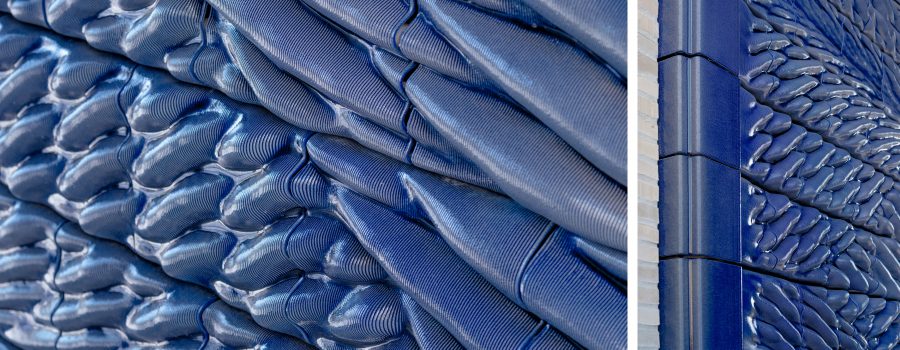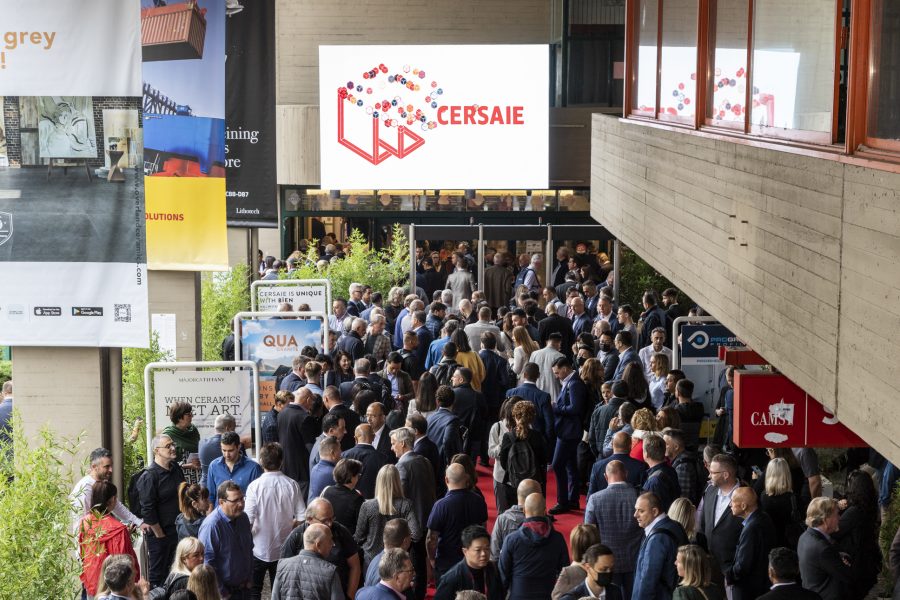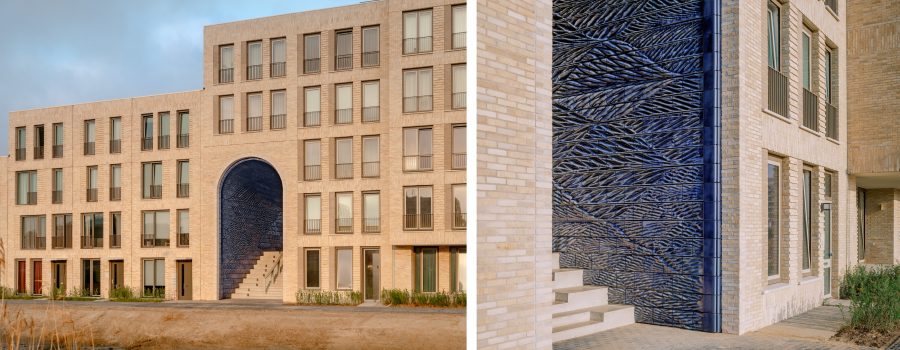
Ceramics and 3D printing with Studio RAP
To celebrate the 40th anniversary of Cersaie - the international trade fair for ceramics and bathroom furnishings (25-29 September 2023 in Bologna), L'Architecture d'Aujourd'hui is publishing a series of articles about ceramic materials in architecture and innovation in the field. The first leg of this journey will take you to the Netherlands.
Founded in 2015 in Rotterdam (Netherlands), Studio RAP is a young multidisciplinary practice bringing together architects, designers, roboticists, programmers and researchers. Using new technologies, they question the codes of traditional architecture. The Nieuw Delft Blue project, inaugurated in 2019 in the PoortMeesters residential building in Delft, is a perfect illustration of Studio RAP’s approach.
Located on the edge of the historic centre of Delft, to the north-east of Rotterdam, the PoortMeesters complex comprises 59 houses and 55 flats arranged around a central planted courtyard accessible via two monumental entrances designed by Studio RAP. Reminiscent of the great vaulted entrances of medieval fortresses, these doors stand out from the facade both because of their size (8m high, 4m wide and 12m deep) and because of the ultramarine blue colour of their ceramic cladding.
-
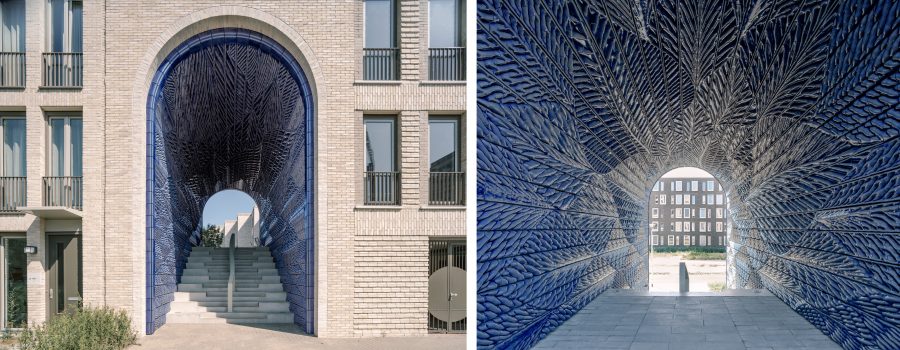
©Riccardo De Vecchi
This is quite simply a tribute to Vermeer’s hometown, which has been famous since the 17th century for its hand-painted blue ceramics, produced at the Royal Delft factory founded in 1653 and still in activity today. Initially inspired by Asian ceramic patterns, Dutch craftsmen gradually adopted a more bucolic style, inspired by nature and local landscapes.
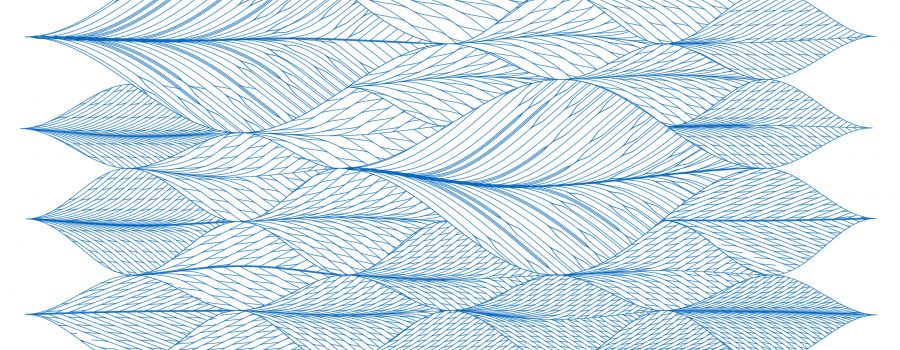
Nature were also the inspiration for Studio RAP when they designed the Nieuw Delft Blue project. Using 3D technology and an algorithm, they created a three-dimensional pattern of dense foliage. This motif was projected flat onto an overall drawing of the vault. Studio RAP’s engineers then redefined the relief and divided the digital model into more than 3,000 tiles measuring approximately 50x30cm. These tiles were then manufactured one by one, in ceramic, using a 3D printer. Each tile was identified and numbered so that it could finally be assembled into a giant jigsaw on site.
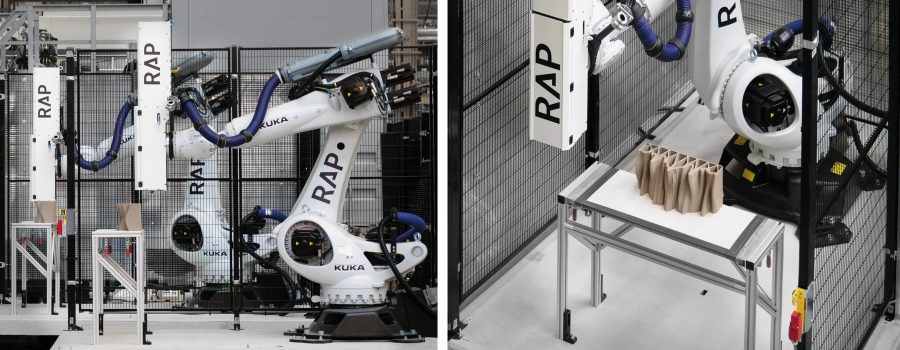
To obtain this deep blue, the pieces fired the first time were coated with a transparent enamel containing cobalt oxide. Black in appearance in nature, this component has the particularity of turning blue under a heat of 1200°C. After a second firing lasting 24 hours, the vitrified enamel was coloured with the shade so typical of Delft.
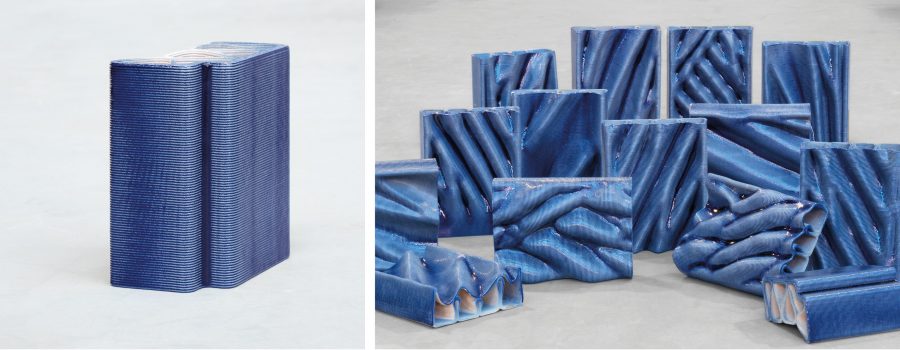
Revisiting the city’s ceramic tradition with the help of new technologies, Studio RAP has created these arches covered in woven foliage – a sort of contemporary reinterpretation of the textile covering set out by Gottfried Semper (in his book Der Stil, 1860) – and offers an interesting vision of ornament in the 21st century.
